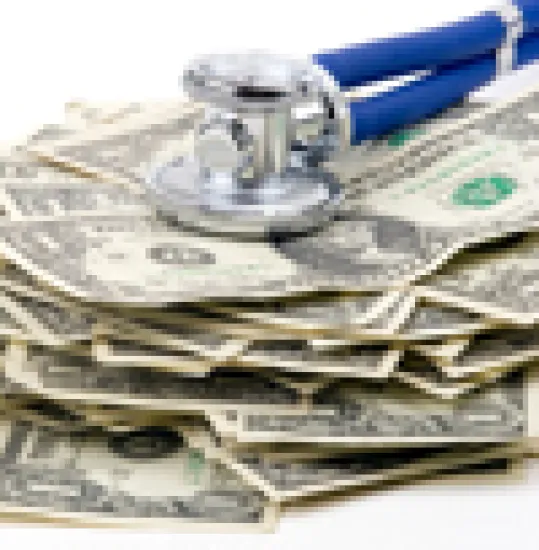
The roots of the asset class’s expected downfall are not hard to come by. The fall of Lehman Brothers Holdings in September 2008 kicked into overdrive the worst downturn since the Depression and saw the credit markets dry up. During the second quarter of 2009, U.S. gross domestic product had declined 6.4 percent.
A look back at recent PE events illustrates why this asset class has been extraordinarily successful doing what other organizations fail to do — align management, investor and director incentives to foster accountability and drive the wealth creation process.
In December 2008, Boston Consulting Group released a report predicting that 50 percent of PE portfolios companies would default on their debt and 40 percent of buyout groups “shutter their operations.” In February 2009, Jeremy Grantham, chairman of money-manager GMO, called PE “the most under-appreciated source of future write-downs and credit chaos.”
By spring 2009, PE firms such as KKR, TPG and Blackstone Group were marking down the value of their investments by more than 30 percent, in line with the fall in the stock markets. In May, Standard & Poor’s reported that private equity–related companies made up more than half of the 300 companies on its “weakest links” list.
By May 2009, Howard Marks, chairman of distressed firm Oaktree Capital, made the unremarkable (at the time) statement that “creditors are about to become the owners of many companies. Equity owners will be wiped out.”
Who could beg to differ? The global economy was in a tailspin and the business faced a staggering “Re-Fi Cliff” — more than $570 billion in loans from the 2005-2007 LBO boom needed refinancing. For more than a few competitors and the asset group’s legions of detractors, this was the industry’s comeuppance.
This was especially true if one accepted the caricature of private equity — that the business is all about buying healthy companies, leveraging them to the hilt, selling off assets, laying off employees and flipping the firm for a quick profit. Moreover, a business that took full advantage of years of easy credit to go on the biggest corporate buying binges of history would sooner or later have its day of reckoning.
By the second quarter of 2007, the value of global M&A peaked at more than $1.5 trillion and private equity’s share had reached 24 percent. Yet by the end of that year, market realities caught up with the buyout business, as Carlyle Group’s David Rubenstein observed, “I think the golden era of private equity is probably behind us, and we’re in a new era and need to adapt.”
PE is not immune from unprecedented economic downdrafts. There have been busts in PE companies — Reader’s Digest, Linen’s ’n Things, Chrysler and Washington Mutual — as well as big declines in the value of listed PE firms such as Blackstone and the U.K.’s Candover. Steve Kaplan, a leading finance professor specializing in private equity at the Chicago University Booth School of Business, suggests that the returns on 2006-2007 vintage PE funds could be negative.
But these setbacks are mild compared to the tsunami that hit many other financial institutions such as investment banks — some of which are no long around (Lehman), were forced to merge (Bear Stearns Cos. and Merrill Lynch), become wards of the state (American International Group), or had to become bank holding companies (Goldman Sachs). Hedge funds were also negatively impacted as their short-term lock-up periods exposed them to more than $500 billion in redemptions.
That PE groups with their highly leveraged portfolio companies have survived and are in better shape than other financial institutions has to be explained at the organizational level. The question is: What makes them different as a group relative to other organizations? There are two answers: access to long-term capital and superior incentive structure to execute deals.
Long-term capital provided by limited partners enables PE to ride out storms like the current economic crisis. Institutional investors that need to match long-term liabilities with long-term investments have been the chief source fueling the asset class’s phenomenal growth — plowing more than $1.2 trillion from 2005 to 2008. Locking in investor capital over seven to 10 years gives leveraged buyout firms more flexibility to create value and exit at an opportune time. This contrasts with the quarter-to-quarter focus of public companies.
But what economic research makes clear is that private equity general partners (GPs) and the management of their portfolio companies operate under a superior incentive structure. Much of this can be explained by the simple but powerful alignment offered by GPs, management and directors putting meaningful personal capital and reputation at risk. In addition, PE firms are constantly in credit and equity markets — indeed contractually obligated to pay off debt and return capital to investors under the limited partnership fund structure — hence, they are continually monitored and must maintain their reputation for honest dealing.
Operational improvements, a big contributor to PE’s performance advantage, can be traced to the fundamentally different way public- and PE-owned company boards function. In Coller Institute of Private Equity’s whitepaper, “Private Equity vs Plc Boards,” Viral Acharya, Conor Kehoe and Michael Reyner found that relative to Plc (public company) boards, PE boards are better aligned (directors have “skin in the game”), have a single-minded focus on value creation, insist on clear articulation of strategic performance priorities and are more actively engaged with management.
The vastly different incentive and governance structure helps to explain private equity’s better performance during the financial crisis. It suggests that from the start, PE companies might be expected to have more flexible capital structures, and take longer to breach covenants. Moreover, they could be expected to attack financial and operating problems much earlier and more creatively. This would argue against massive defaults and suggest that those that do occur will be good companies with bad balance sheets that can be restructured.
So far, this has been the case. At the time they were negotiated, covenant light and payment-in-kind bonds were seen by many as an abuse of the powerful market position PE firms held over unsuspecting lenders. Yet these bonds have provided a cushion for companies to address problems during highly adverse economic conditions.
PE firms have indeed moved quickly to renegotiate loan amendments to increase financial flexibility (Energy Future Holdings, SunGard Data, VNU), push back maturity dates (HCA), deleverage (Freescale), exchange debt (NXP), inject equity (Kion), sell stakes (Groupe Proclif), cut costs dramatically (Toys “R” Us) and even go public (Avago Technologies).
By late summer, PE and the broader corporate community began to benefit from improving credit and equity markets. The rally in the high-yield market saw spreads drop from almost 2,000 points in mid-December to just over 863 in mid-August. According to Dealogic, five of the 10 IPOs filed in August are majority owned by PE firms. Like the rest of the market, PE firms likely benefited from the reluctance of banks to push troubled companies to write down loans, which would have crystallized losses.
Contrary to conventional wisdom, PE is a proven discipline that combines long-term capital with debt and powerful incentives to transform the productive capacity of businesses.
David Haarmeyer is an economic consultant and writer who focuses on organizations, markets and economic development. He recently completed a study on economic growth prospects in Africa. He can be reached at dhaarmeyer@gmail.com.






